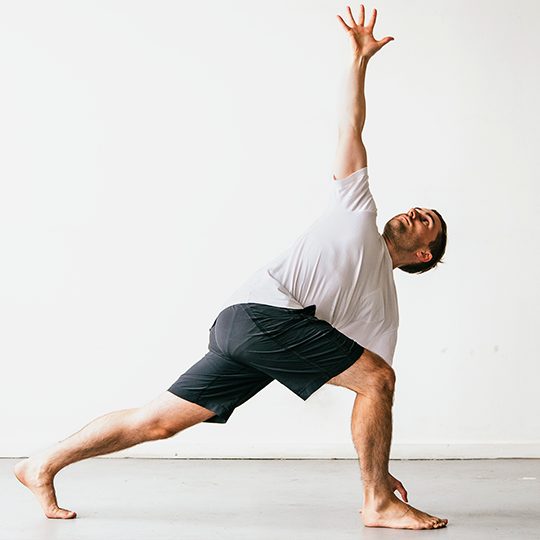
[adinserter block=”1″]
in Yoga
As you begin your yoga class, you’ll often hear your teacher cue to start breathing in and out through the nose, finding your ujjayi breath. As you begin to move through class, you’ll hear alignment cues such as, “Push the mat away and broaden your collarbones.” Then there is the reminder to steady your gaze on one point – this soft-gaze focus is called Drishti.
Created by Sri Krishnamacharya and further developed by B.K.S. Iyengar and Sri K. Pattabhi, the 3 pillars that govern our Vinyasa yoga practice are breath, bandha & Drishti. They all work together to guide us to a place of deep inner focus and concentration, sometimes leading us to meditative states in class.
Ujjayi Breath:
Often described as having an oceanic sound, or referred to as the breath of victory, ujjayi pranayama is meant to be practised through the entirety of your yoga practice, all the way to your final resting pose, savasana. With the lips sealed, you breathe softly in and out through the nose with a soft restriction at the base of your throat, creating a sound like waves washing ashore. This soothing breath will begin to build heat in the body and calms our physiology.
In his book “Modern Yoga,” our founder Duncan Peak explains, “When breathing is performed correctly, smoothly, and graciously, it has the ability to stimulate our parasympathetic nervous system response (rest & relax) and bring a dynamic tranquillity that should accompany vinyasa yoga practice.”
Bandha:
The second pillar that governs our vinyasa yoga practice is bandha, translated as “lock.” Think of these locks as muscle engagement over vulnerable joints. They also facilitate and regulate the flow of energy and prana through our body.
In the example above, we engage multiple muscles in a high plank position when we listen to the cues, “Push the mat away, wrap the triceps back, and broaden your collarbones.” These cues ensure that the muscles around our shoulder girdle are all working appropriately to protect our joints as we move through high to low planks. Many of the alignment cues you hear in your Vinyasa classes are designed to create bandha as you move through your dynamic asana practice. Bandhas ensure that your practice is safe and more challenging! Rather than “hanging out” in our joints, muscle engagement and activation will create greater strength as we move through our poses.
Bandha provides stability and freedom around our joints and helps facilitate the movement of energy through the body.
Examples include:
Mula bandha: (Root lock) created by lifting the pelvic floor.
Uddiyana bandha: (Abdominal lock) The drawing of your abdominal muscles in and up to create core stabilization.
Jalandhara bandha: (Throat lock) Lengthen the neck muscles up and back.
Drishti:
The final piece of the puzzle is Drishti – a soft, still, one-pointed gaze that further deepens our concentration. If our eyes are wandering around the room our minds will stay busy, usually in comparison or judgement. By stilling our gaze, slowing our breath, and focusing our attention inwards, we can access the full benefits of yoga. If we can hone our ability to concentrate on one thing on our yoga mat, this is a powerful tool to strengthen our ability to concentrate with integrity off the mat as well.
These three pieces of the practice bring us into Dharana – a deep concentration. They all work together to give us an experience of peace, tranquillity, steadiness, and focus. If in class you feel scattered or as if you’re over-exerting, even just bringing your attention to one of the three will help steady your mind. Know that these simple practices of breath, bandha, and Drishti can be used as anchors to the present moment, giving you a greater experience of yoga.
Written by Katie Tetz
Studio Business Manager | Ever Inspiring Writer & Yoga Teacher for Power Living Australia
[adinserter block=”1″]
Credit : Source Post






